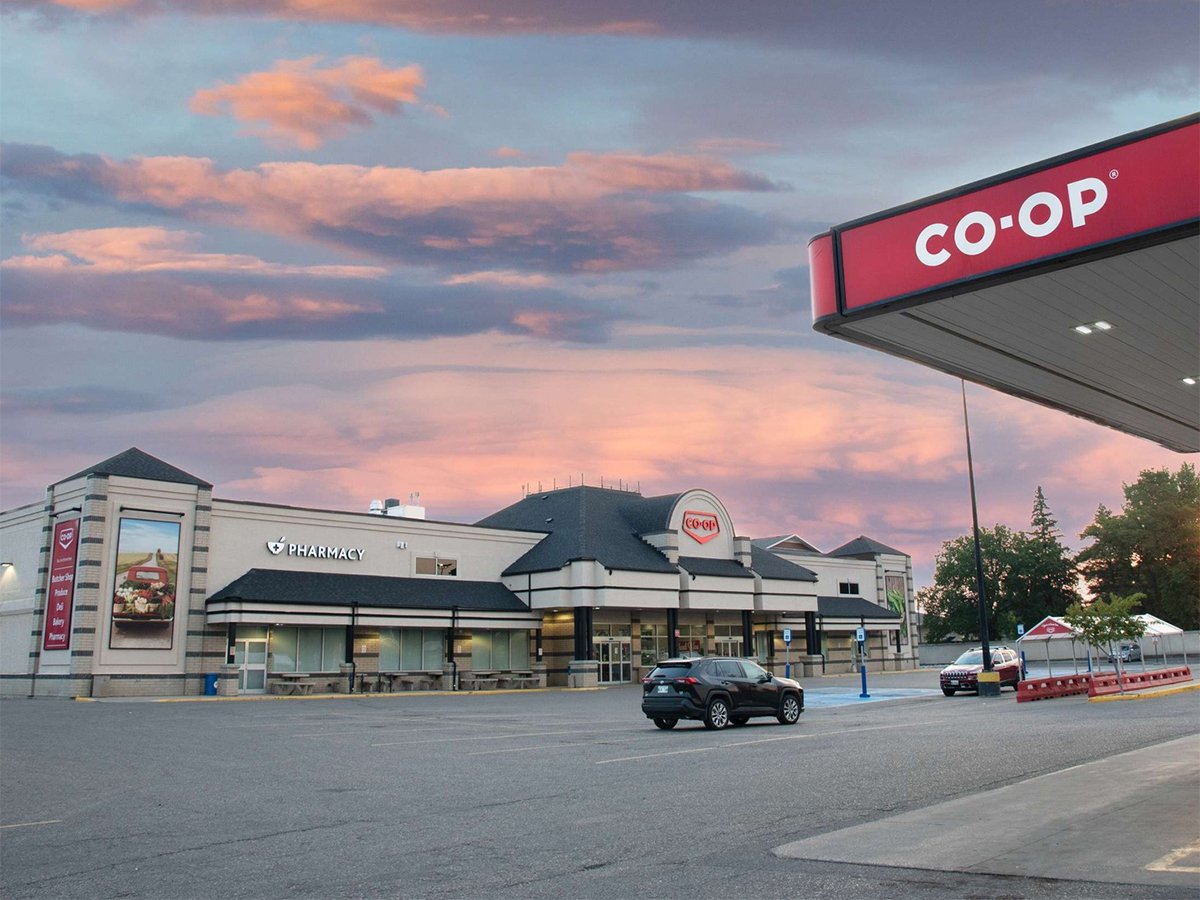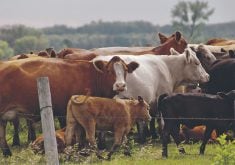Coyote control
letters
To the Editor:
In a previous edition of The Western Producer, a writer was upset about not being able to control coyotes that were ravaging the local sheep. There is an effective and environmentally friendly method of controlling coyotes and that is to use a livestock guardian dog. There are many dogs who will chase and even kill coyotes, but a good guardian dog stays with the livestock and does not actively seek to kill a predator but uses his size and body language to intimidate the threat to his flock or herd.
Read Also

Farmer ownership cannot be seen as a guarantee for success
It’s a powerful movement when people band together to form co-ops and credit unions, but member ownership is no guarantee of success.
Bought as a pup and raised with the livestock, a guardian dog can be kept with them by electric fence if neighbors are close.
A well-bred dog is not aggressive to strangers but should place himself between the livestock and possible threat, giving plenty of warning.
We have had excellent results with Maremmas, and others with different breeds, judging by the photos that appear in The Western Producer.
– Lynette Kreddig,
Mayerthorpe, Alta.
Rail deal
To the Editor:
I am writing this with two concerns. The first is the rail car situation. To start with, the government and rail companies were given the land to build the tracks on. In return, the government was to subsidize our freight on grain shipments.
As railways were abandoned these right-of-ways were sold to whoever, with no compensation being passed on.
Then, the government cancelled the Crow rate for farmers. I guess since they sold the right-of-ways, they figured they could opt out of the Crow deal too.
We as farmers and taxpayers already own the grain cars, but for the second time the government is selling something they didn’t pay for.
In a trucking company, if the company owns the trailers, they get 25 percent of the revenue that trailer makes. Therefore, our freight rate for hauling grain should be 25 percent less than what it is, as we already own the hopper cars.
Why should CN and CP get the cars for a fraction of their value and charge the farmers $1 per tonne extra to pay for them? We own them.
The second is politicians’ wages and double dipping.
I would like to know in what other business or company can you leave one position, go to another in the same business or company and get a pension for doing so. None.
There should be no pension until they leave politics. Also, in most companies or businesses, if there is a deficit, wages would be the first to be rolled back or frozen.
I think in order to cut our deficit, we should roll back our employees’ wages, our employees being our politicians, since we as taxpayers are paying their wages.
– Larry Mitchell,
Wawota, Sask.
Daryl’s wrong
To the Editor:
I challenge Daryl Briscoe to produce any real evidence that 3,432 cats and dogs are killed in Canada every day because nobody wants them – 1,250,680 per year?
Nonsense. The truth is unknown. To my best judgment, the figure is about 200,000-250,000 per year.
And to say that the animal people don’t protest – where on earth does Daryl Briscoe keep his head, in a bucket of sand?
– M. H. Weeks,
S.P.C.A.,
Vancouver, B.C.
Quebec partition
To the Editor:
Partition in Quebec in the case of a referendum win will put some realism into the vote. In the past referendums have been a lark to the separatists – if they win and wreck Canada so what, but if they lost they would just go to the polls in another couple of years.
The way the referendum rules are now set up, a so-called win is 50 percent plus .01 percent.
After this so-called win by the separatists, the areas that voted overwhelmingly in favor of separation should be allowed to form their own country. The areas that voted pro Canada should be allowed to stay.
In handling the referendum in this manner the average Quebec person will have responsibility. The separatists may in fact see their homeland as a small cigar-shaped area surrounded by real Canadiens.
Raising the majority for a separatist win (for example, to 66 percent) is of no value as it will only infuriate people and probably is not democratic.
If it is legal for Quebec to leave Canada then it is perfectly legal for parts of Quebec to leave it. Partition is not a nice prospect but perhaps it will wake up people before our country is completely dismantled.
– Forrest Pederson,
Naicam, Sask.
Bank services
To the Editor:
Further to Keith Warren’s Feb. 1 letter to the Editor entitled “Nice banks,” I would like to make these points:
Yes indeed, the six major banks earned $5.2 billion in fiscal 1995. If this total seems high, Canadians should remember that these are the profits from six separate companies. Considering almost half of all adults in Canada are bank shareholders, either directly or through pension funds and RRSPs, Canadians are the beneficiaries of bank profits – to the tune of more than $2.2 billion in dividends.
Banking is also the most regulated and taxed industry in Canada. The banks paid approximately $3.7 billion in taxes for 1995. In Saskatchewan, banks pay income tax at the highest rate – seven percentage points more than equivalent-sized manufacturing companies.
Contrary to this letter, the banks are indeed responsible corporate citizens.
– Brenda Bracken-Warwick,
Canadian Bankers Assoc.,
Winnipeg, Man.
Farm support
To the Editor:
The Saskatchewan government loves to throw out the following figures when attacked for balancing the budget on the back of rural Saskatchewan.
They state that it paid $426 per capita for farm programs compared to $179 for Alberta and $155 for Manitoba.
This sounds impressive but consider Alberta has more than twice Saskatchewan’s population and has considerably less farms, and this figure takes a huge slide.
Let me put this in simpler terms in case an NDP politician reads this. If Saskatchewan had Alberta’s population of two million people, the per-capita support drops from $426 per capita to $213 per capita.
Then consider a portion of this $426 per capita goes to pay wages for a bloated farm infrastructure. This is a government that thinks a layoff is a contest between chickens. So although this might help government employees, it probably won’t be of much help to most farmers.
So if this statement may sound impressive, all it really does is give truth to the phrase “figures don’t lie but liars can figure.”
– Dana Tumback,
Lancer, Sask.
Gun boycott
To the Editor:
I am writing in response to the article on page 72 of your Feb. 1 edition, headed “Royal Bank not worried about boycott.”
Well I think the Royal Bank and all other chartered banks and corporations that support the Liberal party of Canada better pay attention. This boycott is getting attention and I believe it will work. Anyone that thinks I am predicting wrong, just hang in there with your Liberal party, but remember what happened to the PC party.
In Wainwright, Alta., on Jan. 31, well over 50 credit cards of chartered banks and department stores were cut and accounts ended. There also was approximately $1 million moved from chartered banks to Credit Unions and Treasury Branches; it is catching on.
Mr. Moorcroft, of the Royal Bank of Canada, was quoted as saying they donate to keep a grass-roots democratic government in Canada.
Well as long as I can remember we have not had a grass-roots democratic government. In fact, we in the West don’t even have any say. Before our ballots are counted, the government is elected; you call this democracy, Mr. Moorcroft? Is it democracy to push in a bill like Bill C-68 and force all his own cabinet to vote for it or get thrown out? Is this grass-roots democracy? Well if it is, I guess hell just froze over!
As for corporations and institutions supporting the party in power, we know that this is for one reason only, and that is political favors. Corporations and institutions should get out of politics so the parties can quit buying votes.
I think it is treason to the people of this country what the Liberals are doing. It is sad to see our sports shops, one after another, close their doors. The government should be ready to feed and clothe these people as it is the government that took away their way of life.
The Royal Bank doesn’t think many people will pay much attention to the boycott. If you think they’re wrong, join our fight.
I am enclosing a list of stores and financial institutions and the amounts that they donated. (Source: Registered Political Parties Fiscal Period Returns for 1993.)
Financial institutions: Royal Bank $187,735, CIBC $86,626, Bank of Montreal $94,358, Bank of Nova Scotia $76,825, T.D. $157,648, Bank National $50,085, Hong Kong Bank $3,150, Montreal Trust $10,000, Canada Trust $10,000, National Trust $16,566, AGF $10,000, Household Financial $5,871, Investment Group $15,000, Midland Walwyn $100,414, Wood Gundy $106,227, Nesbitt Thompson $102,385, Scotia McLeod $108,381, Peter Cundill $2,000, Principal Fund $5,000, Templeton Mgn. $5,000, Richardson Greenshields $99,358.
Department stores: Hudson Bay $16,000, Eaton’s $15,000, Met & Saans $5,000, Sears $3,118, Shoppers Drug Mart $200, Canadian Tire $7,860.
– Mervin Grunow,
Wainwright, Alta.
Keep the good
To the Editor:
Comments by Michael Bury in the article “Young farmers fear traditionalists bias panel discussions” (Jan. 25 issue, pg. 5) raises some interesting thoughts.
With all due respect to the enthusiasm of younger farmers (and we need that), there is room, nevertheless, for some caution. Those older farmers or their fathers before them have experienced the results of many of the so-called new marketing practices. There is actually nothing new about them, except possibly some fancier packaging.
I well remember the deep concerns my parents had in the 1930s. I was too young to realize at that time the full extent of those concerns, but they did leave a permanent impression.
It was the experiences of that time that led farmers to demand single-desk selling as we now have in the Wheat Board. It has served us well over the years and will continue to do so with whatever changes are needed for present conditions that do not sacrifice this advantage. (The strong pressure from forces in the U.S.A. to get rid of our Wheat Board demonstrates its effectiveness for marketing to the benefit of Canadian producers).
Those inclined to support dual marketing need only look at the mess in barley marketing the last couple of years.
A voluntary Board marketing from 1935 to 1943 had similar problems. Control of the total supply is what gives us the marketing power of the Wheat Board. Dual marketing could lead to the loss of the Wheat Board, and terms of the free trade agreements would prohibit its reinstatement. Let us be careful what we ask for.
The same pattern shows with changes in transportation policies, and unfortunately pushed by various diverse groups. In reality, we are put back to the same situation as the beginning of this century, when the railway company had virtually full power over farmers. Not till the famous Sintaluta trial did farmers finally gain some control over these outside forces.
Must we “reinvent the wheel” in farm policies?
– George Burton,
Humboldt, Sask.
Crop insurance
To the Editor:
… Saskatchewan Crop Insurance has a total loss of $600 million. It costs $30 million a year to administrate and they lost about $25 million a year on hail insurance.
I wish papers like the Leader-Post and StarPhoenix would print these losses so the general public would know and talk to their MLA so we can stop some of this government waste.
I farm and don’t belong to crop insurance because I think it encourages poor farming practices and you would have to play the system.
– Warren Iverson,
Glaslyn, Sask.














